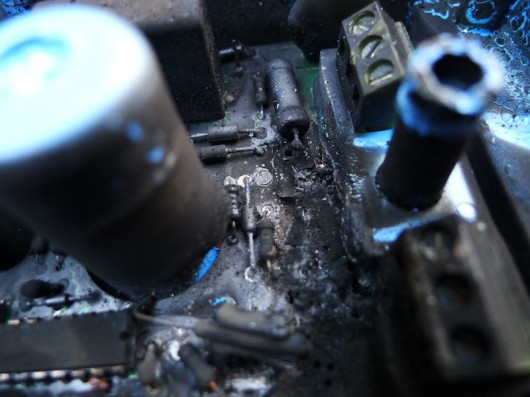The BRCK is now an independent commercial entity and we’ve started to raise our seed round of investment. This means we’re ramping up and are looking to hire for some specific positions. If you’re hungry to join a team that uses technology to solve real-world problems, and has a fun time while doing so, Tell us why you’d like to join and upload your resume/CV here.
If you join the BRCK team as an engineer, that guy below will be your boss.
Electrical Engineer (apply here)
Product Development Engineer (Electrical)
BRCK is a rugged wireless router, an internet connectivity device designed in emerging markets for the changing way we access the internet globally. Its job is to extend the edges of the network, and to connect people and sensors where solid infrastructure isn’t found. We think of it as the easiest and most reliable way to get connect, anywhere you are in the world.
Everyone at BRCK comes to work here because we’re building the tools that every day people around the world will use to improve the lives of millions. In other words, in the fight for a better world, we aren’t 007, we’re Q.
BRCK is looking for an electrical designer to join our team in Nairobi, Kenya. The ideal candidate will be a self-starter, with a passion for enabling communication globally. We have very ambitious plans and we are looking for someone that can share our vision, and take the BRCK product to the next level.
The BRCK team, made of world-class mechanical, electrical and software engineers is based in Nairobi, Kenya, fostering a new age of hardware development on the continent. While we would prefer local applicants, international applicants willing to make a transition to Kenya are invited to apply as well.
Skills and Requirements
- BE, BSc or equivalent degree as a minimum requirement, with a masters or higher degree preferred.
- Minimum of 3 years designing commercial electronic products
- Minimum of 2 years’ experience using industry standard ECAD tools (Schematic capture, Simulation and Layout tools)
- Proven understanding of both analog and digital design requirements and concerns.
Optional Skills and Experience
- Prototype testing and tuning.
- Some high speed digital design experience
- Familiarity with automated test and measurement
- Understanding of concerns in high volume manufacturing.
Priority will be given to individuals with a proven track record of pushing the envelope, thinking creatively and a passion for global communication.
Travel
Up to 20% international travel will be required.
Location
This role will be based in the BRCK Design office in Nairobi, Kenya.
Remuneration
Remuneration will be dependent on skills and experience, and we expect to be able to deliver a competitive package.
Background
Ushahidi, BRCK’s parent company, is a non-profit technology company that builds open source software. The word “Ushahidi” means “testimony” in Swahili, and came out of the crowdsourced mapping platform we built during the Kenyan post-election violence in 2008. Our goal is to improve the way information flows in the world, and the BRCK is a natural extension of this. BRCK is a taking the Ushahidi core ethos, and using that to develop best in class communication tool with your help.
Our team tends to think big and rewards creativity and an entrepreneurial attitude. Over the past six years, we have also built the iHub – the tech community hub in Nairobi, the BRCK – a redesign of connectivity for the developing world, and other projects like Savannah Fund, and AfriLabs. Our ethos – we don’t just build products, we solve problems.


